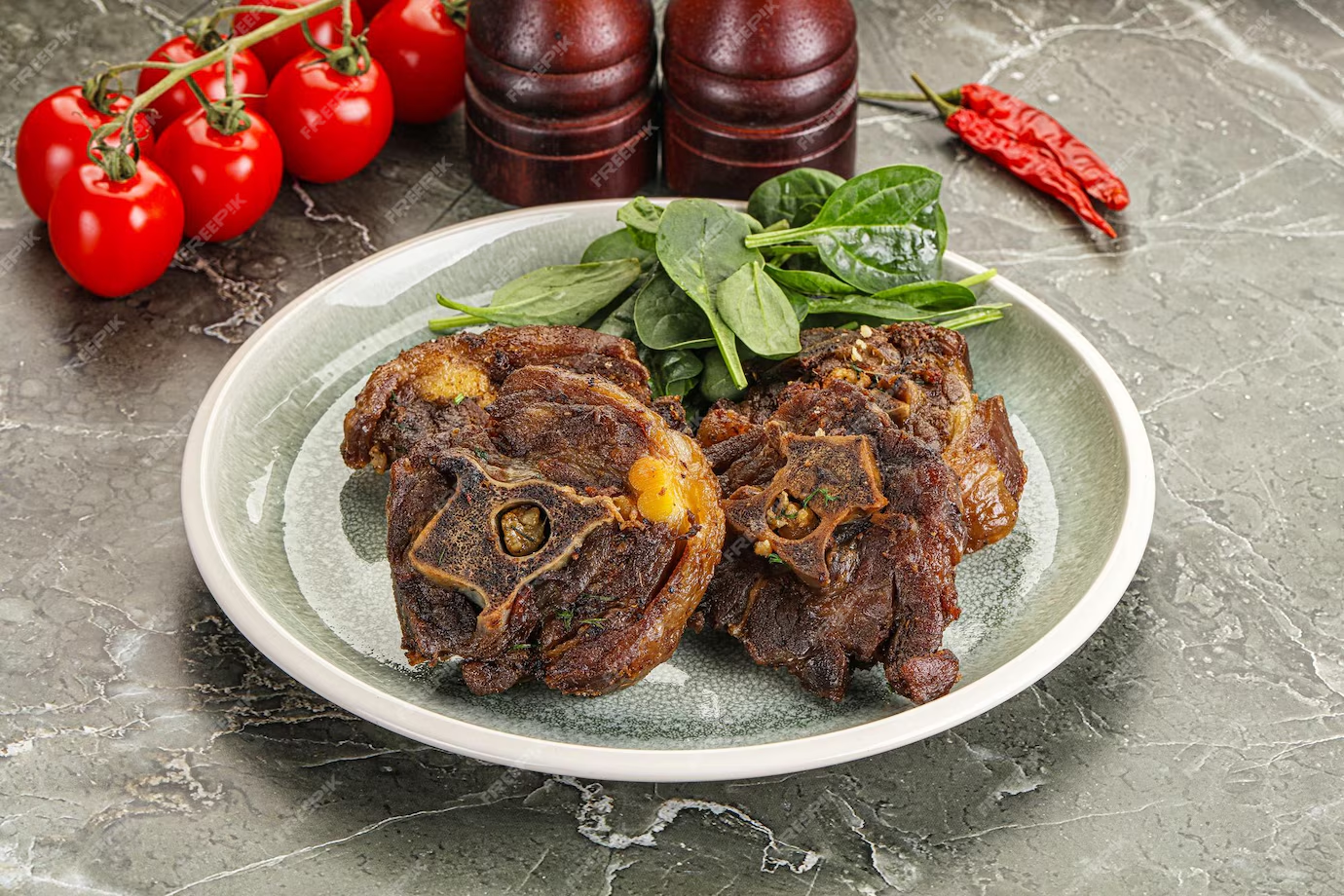Introduction
If you’ve ever seen “oxtail” on a menu or at the butcher’s counter and wondered, “Oxtail is what?”—you’re not alone. This underrated cut of meat is a culinary treasure, beloved for its rich flavor and tender texture when cooked properly.
In this guide, we’ll explore everything you need to know about oxtail, including:
-
What oxtail actually is
-
Its history and cultural significance
-
Nutritional benefits
-
How to cook oxtail for the best results
-
Popular oxtail dishes from around the world
By the end, you’ll understand why oxtail deserves a spot in your kitchen—and how to make the most of it!
What Is Oxtail?
Contrary to what the name suggests, oxtail doesn’t always come from oxen. Traditionally, it was the tail of an ox (a castrated bull), but today, it typically refers to the tail of cattle (beef), regardless of gender.
Key Characteristics of Oxtail:
-
Gelatinous & Fatty: High in collagen, which breaks down into a rich, velvety texture when slow-cooked.
-
Bone-In: The tail is segmented, with marrow-rich bones that add depth to broths and stews.
-
Flavorful: Deep, beefy taste that intensifies with long cooking times.
Originally considered a “lesser” cut, oxtail has gained gourmet status in many cuisines due to its incredible flavor and versatility.
A Brief History of Oxtail
Oxtail has humble beginnings as a peasant food, often used in soups and stews to maximize nutrition from inexpensive cuts. Over time, it became a staple in various global cuisines:
-
Europe: Oxtail soup was popular in England and Spain as early as the 17th century.
-
The Caribbean: Jamaican oxtail stew is a beloved comfort food, often cooked with butter beans and spices.
-
Asia: Korean kkori gomtang (oxtail soup) and Filipino kare-kare (oxtail peanut stew) highlight its versatility.
-
Africa: South African ox-tail potjie (a slow-cooked stew) is a traditional favorite.
Today, ox-tail is celebrated in both home kitchens and high-end restaurants.
Nutritional Benefits of Oxtail
Ox-tail isn’t just delicious—it’s also packed with nutrients:
| Nutrient | Benefits |
|---|---|
| Protein | Supports muscle growth and repair. |
| Collagen | Promotes joint health, skin elasticity, and gut health. |
| Iron | Helps prevent anemia and boosts energy. |
| Zinc | Strengthens immunity and aids metabolism. |
| Healthy Fats | Provides sustained energy and supports brain function. |
Note: Ox-tail is relatively high in fat, so moderation is key for those watching calorie intake.
How to Cook Oxtail: Best Methods & Tips
Ox-tail’s high collagen content means it requires slow, moist cooking to become tender. Here are the best ways to prepare it:
1. Braising (Best for Stews & Curries)
-
Sear ox-tail pieces in oil to develop flavor.
-
Deglaze with wine, broth, or tomatoes.
-
Simmer for 2.5–4 hours until meat falls off the bone.
Pro Tip: Use a pressure cooker to cut cooking time in half.
2. Slow Cooking (Set It and Forget It)
-
Combine ox-tail with vegetables, herbs, and liquid (broth, red wine, or coconut milk).
-
Cook on low for 6–8 hours for fork-tender meat.
3. Soups & Broths (Rich and Nourishing)
-
Simmer ox-tail bones with aromatics for 4+ hours to extract collagen.
-
Strain for a clear broth or keep meat in for a heartier soup.
4. Grilling or Frying (Less Common but Possible)
-
Only works with pre-cooked ox-tail (braise first, then grill/fry for crispiness).
Popular Oxtail Dishes Around the World
1. Jamaican Ox-tail Stew
-
Slow-cooked with allspice, thyme, scotch bonnet peppers, and butter beans.
-
Served with rice and peas.
2. Korean Kkori Gomtang (Oxtail Soup)
-
A clear, milky broth made by boiling ox-tail for hours.
-
Served with salt, pepper, and green onions.
3. Italian Coda alla Vaccinara (Roman Oxtail Stew)
-
Braised with tomatoes, celery, and red wine.
-
Often includes raisins and pine nuts for sweetness.
4. Filipino Kare-Kare
-
A peanut-based stew with ox-tail, vegetables, and shrimp paste (bagoong).
5. Southern U.S. Smothered Oxtails
-
Cooked in a gravy-like sauce with onions, garlic, and bell peppers.
-
Served over mashed potatoes or grits.
Where to Buy Oxtail & How to Choose the Best Cuts
-
Butcher Shops: Often have fresher cuts than supermarkets.
-
Ethnic Groceries: Caribbean, Asian, or Latin markets usually stock ox-tail.
-
Online Retailers: Websites like Wild Fork Foods or Porter Road sell high-quality ox-tail.
What to Look For:
✔ Meaty pieces (not too bony)
✔ Bright red color (indicates freshness)
✔ Minimal odor (should smell clean, not sour)
Note: Ox-tail can be pricey due to rising demand—expect to pay 8–15 per pound.
Final Thoughts: Why You Should Try Oxtail
Oxtail is a flavor powerhouse that transforms into melt-in-your-mouth goodness when cooked low and slow. Whether you’re making a hearty stew, a luxurious soup, or an exotic curry, this cut delivers unmatched depth and richness.
Now that you know “Ox-tail is what?”, it’s time to grab some from your local butcher and start cooking!
FAQs
1. Is ox-tail healthy?
Yes! It’s rich in protein, collagen, and minerals—but should be eaten in moderation due to fat content.
2. Can I substitute ox-tail in recipes?
Short ribs or beef shanks are the closest alternatives, but they won’t have the same gelatinous texture.
3. Why is ox-tail so expensive now?
Increased popularity (thanks to food trends) and limited supply have driven prices up.
4. How do I store ox-tail?
-
Fridge: Up to 3 days raw, 4 days cooked.
-
Freezer: Up to 6 months (vacuum-sealed for best quality).










